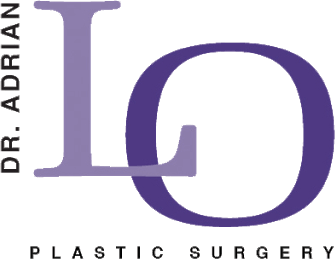Physical discomfort shouldn’t dictate your clothing choices or limit your activities. When the labia causes chafing during exercise, pain during intercourse, or persistent irritation, these are functional concerns that deserve attention.
Your anatomy is unique. There is natural variation in the labia appearance. While some women seek labiaplasty for functional reasons, others pursue it to address asymmetry or size variations that impact their confidence.
If you are experiencing physical discomfort or have aesthetic concerns, you may wonder, “Do I need a labiaplasty?”
Labiaplasty reshapes the labia minora or inner lips making them smaller and more proportionate addressing both functional and cosmetic issues. This specialized procedure requires careful consideration of your symptoms, surgical options, and consultation with a plastic surgeon that specializes in labiaplasty.
Understanding Labiaplasty and Its Benefits

What Is Labiaplasty?
Labiaplasty is a surgical procedure that reduces the size of the labia minora (inner lips) making the labia more proportionate to your body. Women seek this procedure for various reasons, including physical discomfort during activities, difficulties with personal hygiene, or dissatisfaction with the appearance of their labial area.
The surgery aims to create a more comfortable and aesthetically pleasing result while maintaining natural function and sensation.
For many women, enlarged labia can cause discomfort, irritation, pain during intercourse or embarrassment in situations with wearing certain clothing or during intimate situations. These physical and emotional concerns can impact quality of life and self-confidence. Labiaplasty addresses these issues by reducing and reshaping the labial tissue to eliminate excess skin that may cause these problems.
Differentiating Between Functional and Cosmetic Motivations
When considering if you need a labiaplasty, understanding your primary concerns may help determine if the procedure is right for you:
Functional Motivations:
- Pain or discomfort during physical activities
- Irritation or chafing when wearing tight clothing
- Discomfort during intercourse
- Recurrent infections due to moisture retention
- Hygiene difficulties
Cosmetic Motivations:
- Asymmetry between labia
- Self-consciousness about labia size and appearance
- Concerns about visibility in clothing
- Desire for a more youthful genital appearance
Signs You Might Need a Labiaplasty
Physical Symptoms
Certain physical symptoms suggest you might benefit from labiaplasty:
- Discomfort during activities. Large labia can cause pain or discomfort during activities like cycling, horseback riding, or even walking for extended periods. The labial tissue may become twisted, pulled or pinched during these activities.
- Intimacy issues. Pain during intercourse (dyspareunia) can result from excess labial tissue being pushed inside the vagina during penetration. This can cause both physical discomfort and psychological distress.
- Clothing restrictions. Many women with enlarged labia avoid certain types of clothing like swimwear, leggings, or tight jeans due to visible contours or discomfort from friction and pressure.
- Recurrent irritation. Excess labial tissue can trap moisture and create an environment conducive to infections or chronic irritation, leading to ongoing discomfort and sometimes medical issues.
Psychological Considerations
Beyond physical symptoms, psychological factors may influence your decision:
- Body image concerns. Dissatisfaction with the appearance and size of your labia can affect self-esteem and body image. These feelings are valid reasons to consider labiaplasty if they significantly impact your quality of life.
- Relationship confidence. Concerns about labial appearance may cause anxiety during intimate situations, leading some women to avoid relationships or intimate contact altogether.
- Clothing confidence. The ability to wear desired clothing without worry about visible contours or discomfort can significantly improve quality of life and self-expression.
It is important to note that there is tremendous natural variation in the labial appearance. However, if your concerns impact your physical comfort or emotional well-being, discussing labiaplasty with a qualified plastic surgeon is appropriate.
Types of Labiaplasty Procedures
Trim Labiaplasty
The trim technique is the most traditional approach to labiaplasty. This technique involves:
- Direct removal of excess tissue along the edge of the labia minora
- Creating a more contoured edge with natural coloration
- Usually leaving a fine scar along the edge that typically fades well
- Relatively straightforward procedure with predictable results
This technique works well for patients whose primary concern is the length of the labia minora, particularly when there is pigmented tissue they wish to remove. The procedure creates a new labial edge.
Wedge Labiaplasty
The wedge technique takes a different approach by:
- Removing a V-shaped or pie-shaped wedge of tissue from the thickest part of the labia
- Preserving the natural labial edge and its pigmentation
- Creating a more natural appearance with less visible scarring
- Maintaining the original tissue at the edge of the labia
This technique is often preferred when maintaining the natural labial edge is a priority. This procedure can be particularly effective for reducing the central bulk of enlarged labia while preserving the natural border.
Combined Labia Procedures
For some patients, addressing only the labia minora may not create the desired result. Combined procedures may include:
- Labia majora reduction or augmentation – reduction for loose skin and fat grafting for deflated labia majora
- Clitoral hood reduction – where there is excess skin around the clitoral area
- Monsplasty or reduction of the mons pubis to correct excess fullness or loose saggy skin
- Vaginal rejuvenation procedures
These combined approaches address multiple aspects of genital appearance and function simultaneously, providing more comprehensive results when appropriate.
Related: Wedge versus Trim Labiaplasty
The Labiaplasty Consultation Process

What to Expect at Your Consultation
A labiaplasty consultation with a qualified plastic surgeon includes:
- Comprehensive medical history. Your plastic surgeon will review your medical history, including previous surgeries, medical conditions, medications, allergies, and smoking status. This information helps determine if you are a good candidate for surgery.
- Discussion of concerns. You will have the opportunity to discuss your specific concerns and goals. Be prepared to speak openly about both physical symptoms and aesthetic desires.
- Physical examination. A physical examination allows your plastic surgeon to assess your anatomy and determine which surgical approach would best address your concerns.
- Review of procedure options. Based on your anatomy and goals, your plastic surgeon will recommend specific techniques and explain the benefits and limitations of each.
- Viewing of before and after photos. Most plastic surgeons maintain a portfolio of previous labiaplasty results. Reviewing these before and after labiaplasty images can help you understand potential outcomes and set realistic expectations.
Questions to Ask During Your Labiaplasty Consultation
To make the most of your consultation, consider asking:
- Am I a good candidate for labiaplasty?
- Which technique do you recommend for my specific anatomy?
- What results can I realistically expect?
- What will my recovery be like?
- Where will surgery be performed, and what type of anesthesia will be used?
- What are the potential risks and complications?
- How many labiaplasty procedures have you performed?
- May I see before and after photos of your patients?
Preparing for Labiaplasty Surgery
Preoperative Guidelines
Follow these guidelines for a smooth surgical experience:
Medical clearance. Depending on your age and medical history, your plastic surgeon may request clearance from your primary care physician.
Medication adjustments. You may need to stop taking certain medications, including aspirin, anti-inflammatory drugs, and some supplements that increase bleeding risk. Always follow your plastic surgeon’s specific instructions.
Lifestyle adjustments. Smoking impairs healing and increases complication risk. Stop smoking at least two weeks before and after surgery. Reducing alcohol consumption in the weeks before surgery is also recommended.
Practical Preparations:
- Arrange for someone to drive you home after surgery
- Prepare a recovery area at home with necessary supplies
- Fill prescriptions before your surgery date
- Plan for 1-2 weeks away from work or school
- Purchase recommended supplies like ice packs, peri bottles, and comfortable, loose clothing
Mental and Emotional Preparation
The decision to undergo labiaplasty is personal and can involve complex emotions. Consider these aspects of emotional preparation:
Realistic expectations. Understanding that while labiaplasty can significantly improve comfort and appearance, perfect symmetry is not always achievable.
Support system. Having supportive friends or family members who respect your decision can be invaluable during recovery.
Recovery mindset. Preparing for mild temporary discomfort during the healing process helps create a more positive experience.
Labiaplasty Recovery Time and Healing Process
Immediate Postoperative Period (1-7 Days)
The first week after labiaplasty involves:
Pain management. Most patients experience mild to moderate discomfort managed with prescribed non-narcotic pain medication for the first few days, then over-the-counter pain relievers.
Swelling and bruising. Mild to moderate swelling and some bruising are normal, peaking around day 3-4 before gradually subsiding.
Activity Restrictions – during this period:
- Rest with your hips elevated when possible
- Apply ice packs (wrapped in a soft cloth) for 15-20 minutes hourly while awake
- Avoid sitting directly on the surgical area
- Take short walks to promote circulation
- Use a peri bottle or shower to clean the area after using the bathroom
- Wear loose, comfortable clothing
Hygiene care. Gentle cleansing with mild soap and pat-drying helps prevent infection and promotes healing.
Early Recovery Period (1-4 Weeks)
As healing progresses:
Return to Activities:
- Most patients return to sedentary work or school after 5-7 days
- Light exercise like walking can resume after 2 weeks
- More strenuous activities should wait until 4-6 weeks
Symptom Resolution:
- Swelling decreases significantly but may not completely resolve for several months
- Discomfort during normal activities typically resolves within 2-3 weeks
- Sensations like itching, tingling, or occasional sharp pains are normal as nerves heal
Follow-up care. Regular check-ups with your plastic surgeon ensures proper healing and addresses any concerns promptly.
Complete Recovery (6-12 Weeks)
Full recovery includes:
Return to all activities. By 6-8 weeks, most patients can resume all normal activities, including intercourse, strenuous exercise, and wearing any type of clothing.
Final results. While significant improvements are visible within weeks, the final results of labiaplasty may take 6-12 months as all swelling resolves and scars mature.
Scar maturation. Scars typically fade significantly over 6-12 months, eventually becoming barely noticeable in most patients.
Related: Your Ultimate Labiaplasty Recovery Guide
Labiaplasty Surgery Cost Considerations
Factors Affecting Labiaplasty Cost

Several factors influence the total cost of labiaplasty:
Geographic location. Procedure costs vary significantly by region, with higher prices typical in major metropolitan areas with increased costs of living.
Surgeon expertise. More experienced plastic surgeons with specialized training in genital procedures may charge higher fees, reflecting their expertise and consistently excellent results.
Facility fees. The surgical setting (hospital, ambulatory surgery center, or office-based surgical facility) affects total cost. Hospital-based surgeries typically cost more than those performed in outpatient facilities.
Anesthesia fees. The type of anesthesia used and the professional fees of the anesthesia provider contribute to overall cost.
Procedure complexity. Combined procedures or more complex cases requiring additional techniques will increase surgical time and cost.
Evaluating Labiaplasty Before and After Results
Understanding Realistic Outcomes
Reviewing labiaplasty before and after results helps develop realistic expectations:
Reduction in size. Patients see significant reduction in labial size and projection with the labia typically sitting comfortably within the labia majora after healing.
Improved symmetry. While perfect symmetry is not always achievable, labiaplasty typically creates improved balance between the right and left labia.
Scar appearance. Scars typically fade substantially over a period of one year. The location and visibility of scarring depend on the surgical technique used.
Functional improvements. Beyond appearance, patients have improvement of physical discomfort during activities, intercourse, and while wearing tight clothing.
Questions to Consider When Viewing Results
When reviewing before and after photos, consider:
- Do the results look natural?
- Are the patients shown similar to you in terms of concerns and anatomy?
- Is there consistent quality across multiple patient results?
- Do you see a range of different anatomical variations in the before photos?
Remember that each person’s anatomy is unique, and your results will be individual to you.
Making Your Decision: Is Labiaplasty Right for You?
Questions for Self-Reflection
Consider these questions when deciding if labiaplasty is right for you:
- Does my labia appearance affect my confidence and interfere with my self esteem?
- Do physical symptoms impact your daily activities or quality of life?
- Are your expectations for improvement realistic?
- Are you pursuing surgery for yourself rather than to please someone else?
- Do you understand the risks and benefits of the procedure?
- Are you in good health and able to tolerate surgery?
- Can you commit to the recovery process?
Choosing the Right Plastic Surgeon
The success of your labiaplasty can depend on your choice of plastic surgeon. Look for:
Board certification. Choose a plastic surgeon certified by the American Board of Plastic Surgery who has specific training and experience in genital procedures.
Specialized experience. Ask about the plastic surgeon’s experience specifically with labiaplasty and review their before-and-after gallery.
Communication style. Select a plastic surgeon who listens to your concerns, answers questions thoroughly, and makes you feel comfortable discussing sensitive topics.
Comprehensive approach. The right plastic surgeon will discuss all options, including considerations for combined procedures when appropriate.
Facility accreditation. Ensure the surgery will be performed in an accredited facility with proper safety standards.
Your Next Steps: Taking Action on Your Decision
If you experience physical discomfort or have cosmetic concerns about your labia, a labiaplasty consultation can provide personalized answers to the question, “do I need a labiaplasty?” This procedure offers both physical and emotional relief and aesthetic improvements for many women.
Dr. Adrian Lo brings exceptional surgical skill and compassionate care to each labiaplasty procedure. With specialized expertise in female genital surgery, Dr. Lo creates personalized treatment plans that address your unique concerns and anatomy.
Schedule a consultation with Dr. Lo and learn how labiaplasty will improve your comfort and confidence.
